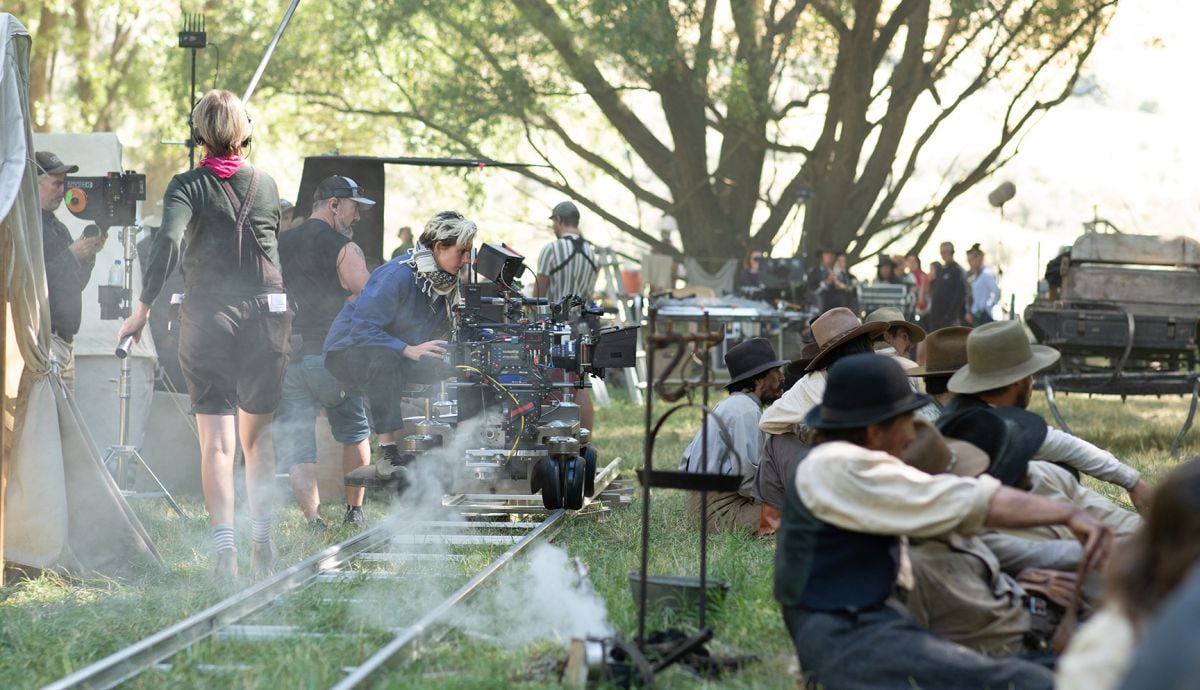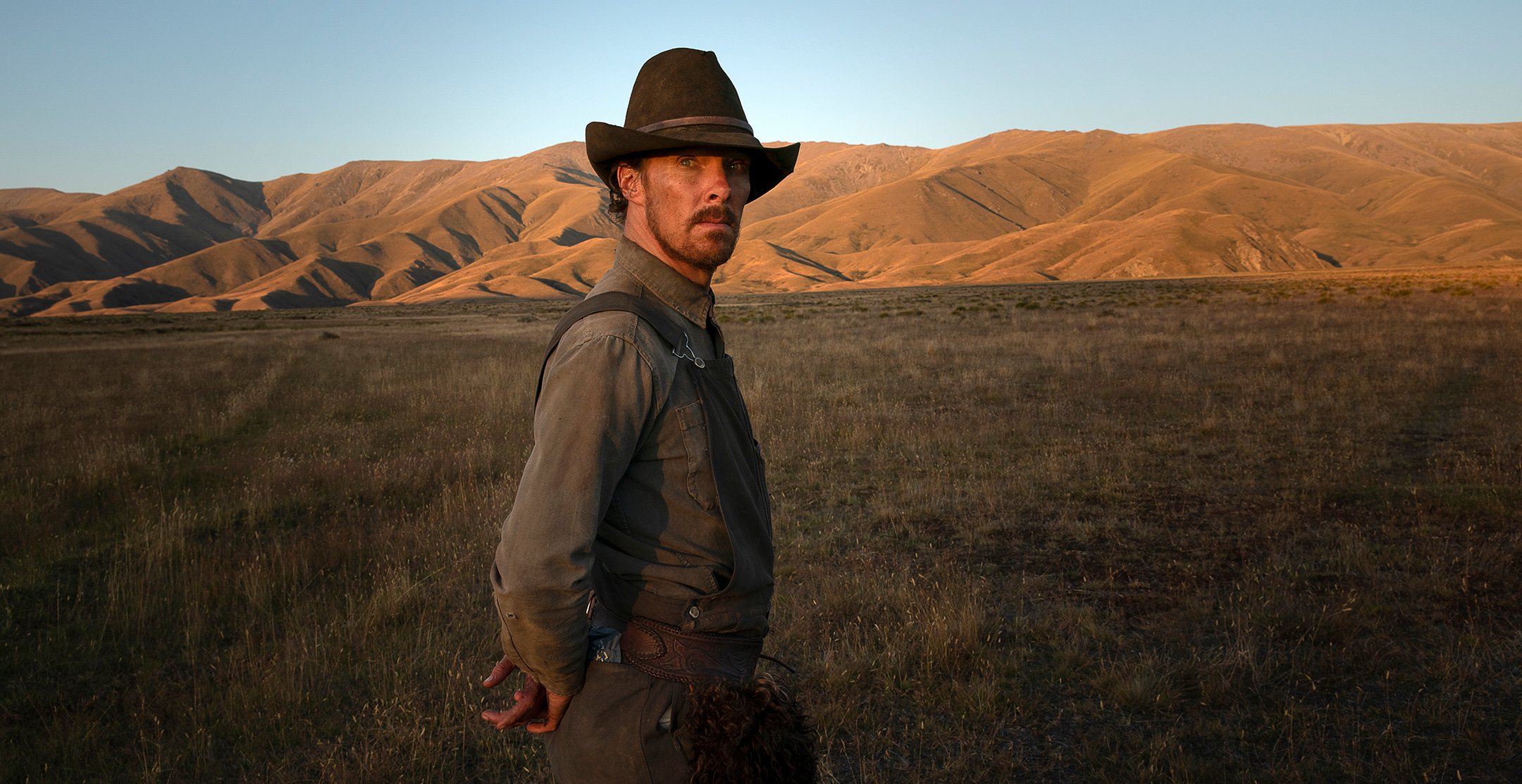
Western Tension: The Power of the Dog
Ari Wegner, ACS discusses her collaboration with director Jane Campion, doubling New Zealand for the Big Sky country of Montana, and much more.
Unit photography by Kirsty Griffin. All Images Courtesy of Netflix.
The Power of the Dog is a Western in all its trappings. However, as cinematographer Ari Wegner, ACS points out, it deviates from the genre in a fundamental way: “It’s not two people dueling with guns; it’s two people dueling with a look.” In other words, it’s the sort of psychologically loaded film that one would expect from director Jane Campion.
Planning Perspectives
Adapted by Campion from Thomas Savage’s 1967 eponymous novel, the film is set in 1925 Montana on a cattle ranch owned by the fictional Burbank brothers. The dynamic between the siblings shifts when quiet, stolid George Burbank (Jesse Plemons) weds the widow Rose (Kirsten Dunst) and brings her home along with her sensitive son, Peter (Kodi Smit-McPhee). Phil Burbank (Benedict Cumberbatch), who has lorded over the ranch as an alpha male with a toxic streak, isn’t happy about this new arrangement and starts a passive-aggressive campaign against the newcomers.
“When I think of Westerns,” says the Australian cinematographer, known for Lady Macbeth (AC July ’17), Zolaand Stray, “whatever the narrative, it’s almost inevitable there will be a climactic show of physical violence. But what interested Jane and me a lot more was psychological violence — that someone walking upstairs, closing a door or whistling could be more terrifying than someone pulling a gun — and, for Rose, it is completely debilitating.
“Jane has such an amazing history of telling stories with women at the center,” she adds. “This is the first film she’s made with a male protagonist. Phil certainly presents on the extreme end of masculinity — but of course, a character who was that, and that alone, would not be of much interest to a filmmaker like Jane.”
Wegner had worked with Campion once before, on the director’s one and only commercial. Years later, the cinematographer got a Christmas Eve surprise. “I was in the supermarket, my phone rang, and it was Jane Campion calling.” The director was looking for a cinematographer who could do a year-long preproduction and participate in location scouting, designing sets and storyboarding. “I can’t think of a more dream phone call to have,” Wegner says.
“To say we started scouting a year before we shot is very emblematic of the way Jane likes to work: a warm, inclusive environment that involves a lot of wonderful dinners, walking, swimming — things that help you get to know someone well enough so that when you’re in the thick of it, and you only have 20 minutes to shoot something you’d need an hour for, you’ve got someone there who’s really a friend and won’t crack or crumble.”
During a New York Film Festival Q&A, Campion recalled, “We spent a long time discussing the language of the film that we wanted to use photographically. We talked a lot about the characters. Ari is a DoP who works from a deep interest in character and in story, which is lovely. To me, when the visuals are really embedded inside the mechanics and themes of the story, that’s so much more meaningful than just looking beautiful.” Wegner’s impressive cinematography ultimately earned her the Variety Artisan Award at the Toronto International Film Festival.
New Zealand for Montana
Montana was too developed to serve as a location, so the filmmakers decided to shoot in a remote, mountainous corner of New Zealand’s South Island, with interiors created on Auckland soundstages. Wegner describes their visual style as classical and unadorned: “We both have an allergy to photography that’s too showy, or has anything added just to be pretty — when a shot has, as Jane might describe, ‘too much icing.’ We trusted this film would work with restraint and discipline.”
That approach was occasionally interrupted by looser interludes when Phil Burbank is in his private world with his guard down, as when he bathes in a pond hidden by willows — what the filmmakers called “the sacred place.” Here, the camera is handheld and “becomes curious and responsive to whatever Benedict is doing,” Wegner says. This strategy also applied to Phil’s emotional outburst when he learns that Rose has sold his cow hides. “He goes from being passive-aggressive to outright infuriated. For most of the film, everyone is trying their best to swallow their strong emotions, and the camera is quite a calm witness — so when Phil finally has this furious tantrum, this complete loss of self-control, we needed that adrenalin in the camera, too. To feel his unsteadiness, and be able to whip-pan with him — to be a little afraid, even.”
Visual references included “contemporaneous photos of Montana by photojournalist Evelyn Cameron, postcards, and journals from the time,” Wegner adds. Transported by these sources to 1920s Montana, the collaborators wanted their production to have the same level of specificity. “Jane and I both love obsessing about details, so we could have a conversation about cutlery or this rug versus that rug, or whether the loaf of bread was made in a tin or was a round loaf. I can geek out about that kind of stuff for hours.”
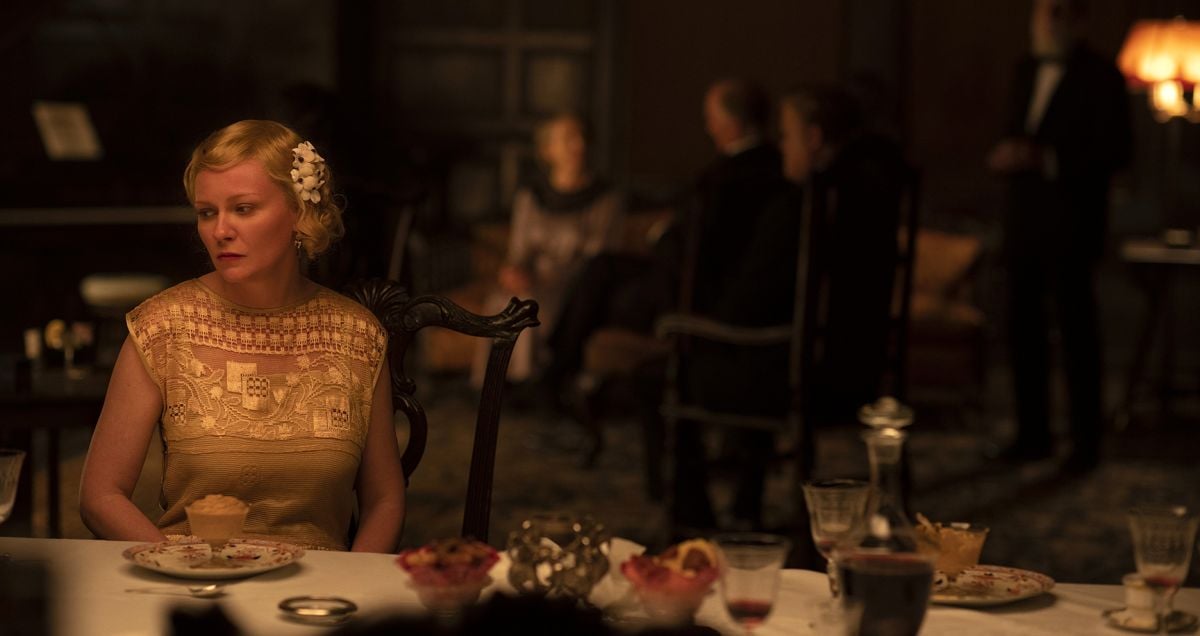
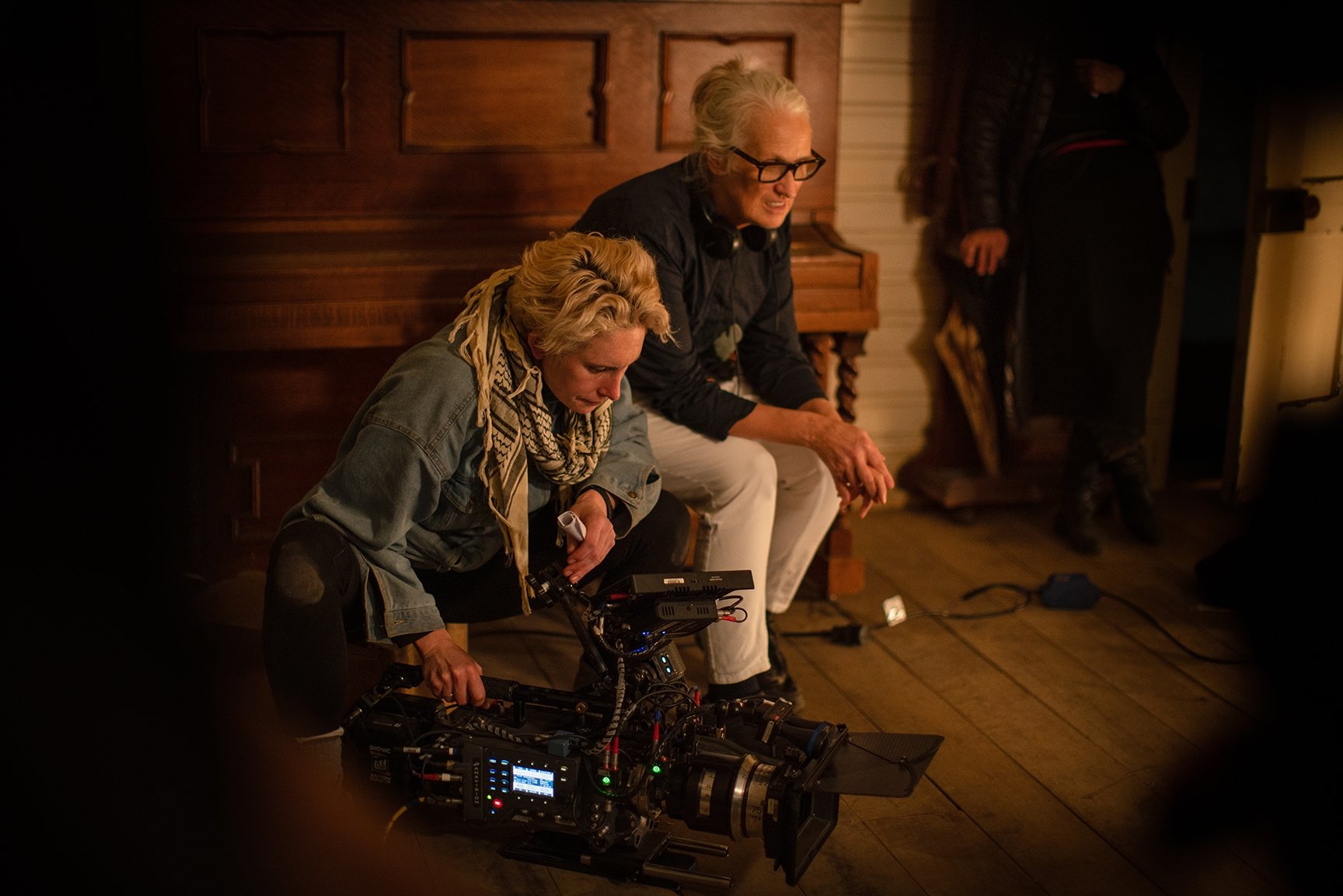
Framing and Optics
Though one might expect any Western with an ensemble cast to have a widescreen format, the duo decided upon a 2.39:1 aspect ratio only after much debate. “Like all the choices, we ‘angsted’ and went down every rabbit hole you could,” Wegner recalls. “Jane has a romantic side and a practical side. The latter said that chances are, over the film’s lifetime, most people will view it on [its streaming distributor] Netflix.” So, after considering and then rejecting a squarish ratio, they pondered 1.78:1 — but after taking hundreds of photos on location, Wegner says, “we could see that the mountain range was calling out for [2.39].”
Thus, they utilized the full width of the Arri Alexa LF’s sensor, pairing the larger-format camera with Panavision Ultra Panatar lenses. “We loved those lenses,” Wegner says. “They’re beautiful on faces and 1.25x anamorphic is a very gentle anamorphic. It feels anamorphic without being anamorphic, in ‘all caps.’”
Faces were important to Campion, providing windows into her characters’ complex psychology. “Jane is a real long-lens fan,” Wegner says. “She described her cinematography preferences as ‘set the scene and see everything, then go in with a long-enough lens that all your focus is [on] the actors.’ You don’t need to keep proving where you are. Once you know, you can look at the faces.”
Light and Silhouette
As Westerns go, this one is fairly dark, with gray clouds hanging over the mountains and low-key interior lighting. Wegner notes, “The book describes the Burbanks’ ranch as the first house in the valley to get electricity, so we reserved electric lights for the ranch, and everything else had to be candles or lamps. To supplement the practical sources, we generally used Jem Balls or small rows of incandescent bulbs. I also really love bouncing Dedos or Source Fours into unbleached muslin on the floor for an uplight, which is both menacing and beautiful. Eyelight is also very important to me when lighting low-key, and we sometimes added Astera tubes for that.”
The Burbank house took inspiration from Theodore Roosevelt’s Sagamore Hill mansion on Long Island, with its wild-animal trophies, elegant décor and large windows. “A lot plays in silhouette because the windows are big, and that’s what happens before bright domestic lighting was a thing,” Wegner says. “[Silhouettes] became a real theme, and when you have characters like Phil, who cuts an amazing silhouette with his hat, his profile and those wooly chaps, it’s pretty irresistible.”
Production designer Grant Major designed sets that would provide Wegner with “a ‘Disneyland’ of angles and surfaces,” she attests. “This was the most time I’ve spent in studio, ever, and I didn’t expect to love it as much as I did. Shooting there day after day, you really start to understand the room and all of its surfaces, and how each responds best to which lighting approach.”
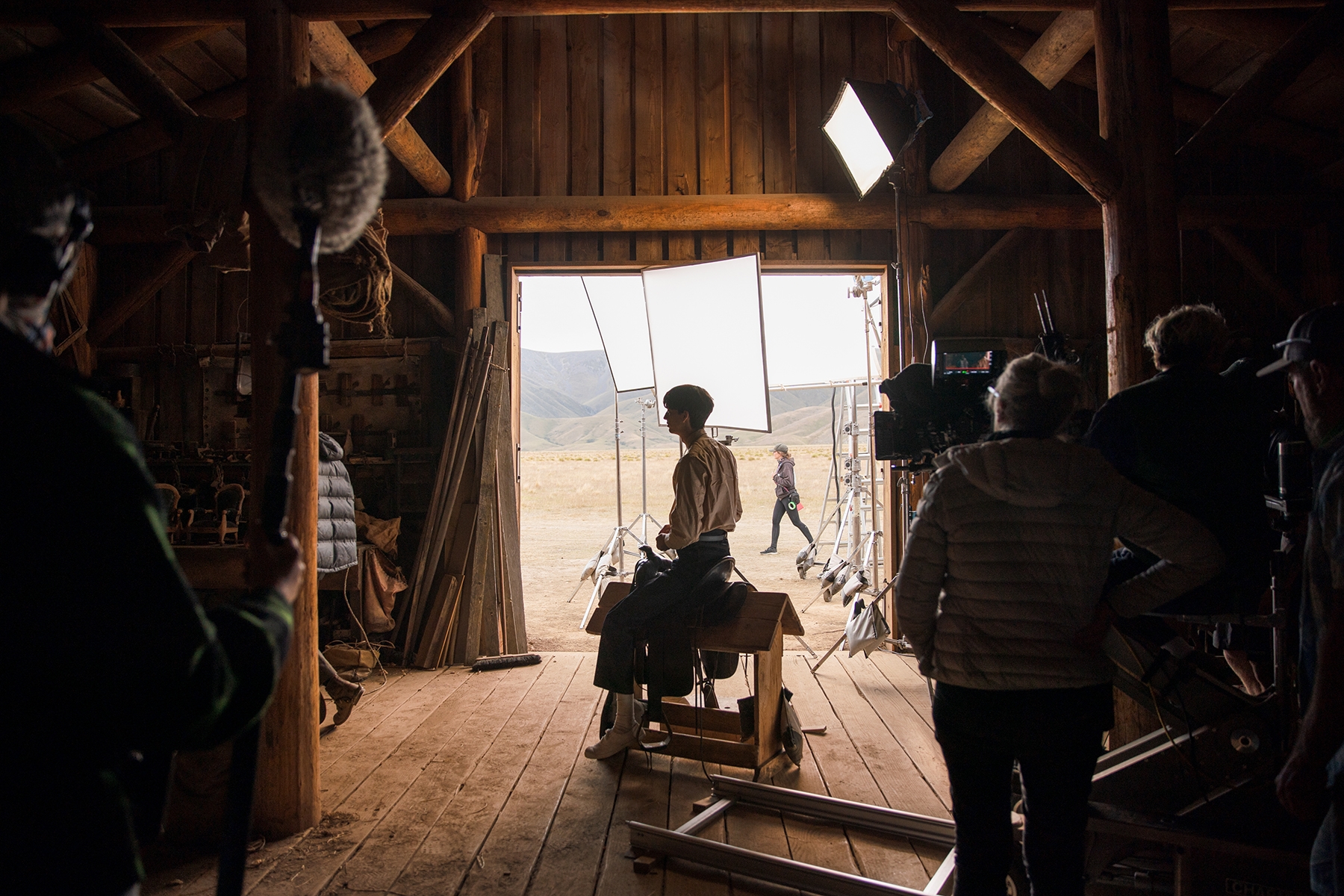

Make-or-Break Scene
The house exterior, cattle yards and rough-milled log barn were all built from the ground up on an existing sheep farm. The barn is a refuge for Phil, where he keeps a saddle shrine to his mentor, Bronco Henry. It’s also where a key scene takes place toward the film’s denouement, when Phil and Peter meet up one night. “That was a make-or-break scene for the film,” Wegner says. Peter recognizes something in Phil, and that knowledge gives him power. As Phil braids a cowhide rope, Peter lights a cigarette, takes a puff, puts it between Phil’s lips, then his own. It’s a breathless moment, shown in close-ups. Wegner says, “The scene needed to have that charged atmosphere of two animals sniffing each other out — a real electricity. It’s a love scene, but it’s also a ‘murder’ scene. We wanted it to feel intimate, private, dangerous and tense. The first time I watched it, I got goosebumps. I don’t think that happens too often with a scene you shot yourself.”
Regarding the filmmakers’ process for this scene, she says, “The coverage was planned in Jane’s favorite way: an introduction shot that develops into a wide, then close shots on the faces, as well as macro shots that had to feel sensual and charged. You don’t see Peter and Phil touch in the scene, but the macro cutaways make it seem as if they are. You’ve got hands caressing objects — leather, ropes and cigarettes. Every shot had to have tension, but we wanted to cover the scene in that uncomplicated way, where the act of shooting it didn’t require technical distractions for the actors.”
The filmmakers and actors hunkered down in the barn for a full day to shoot the nighttime scene. Wegner notes, “We went to great lengths to black out the barn, because the walls had been designed with hundreds of holes and gaps to let sun in during the day. Over one weekend, the whole grip and electric team worked together to wrap the entire barn in a double layer of black material to create complete darkness inside. From the outside it looked like a crazy, wild, contemporary art installation.”
Lighting was based on the main source of the time: a single-source oil lamp. “That sets a nice atmosphere for the actors,” Wegner says. “It was genuinely dark. Again, we used a Jem Ball on the floor to augment the oil lamp, and some Dedolights rigged up out of frame for edge light when needed.” For this scene, the camera was rated at 1,600 ISO with a stop of T2.8.
Back to Basics
The cinematographer’s most satisfying days were spent in Phil’s sacred place, where it was just Campion, Cumberbatch and Wegner communing with a handheld camera. “To preserve the atmosphere of the moment, support crew stayed apart,” Wegner says. “It really felt like the kind of filmmaking that I think a lot of filmmakers yearn for: the film-school days when you had just a battery in one pocket and a card in another, and you’re just there doing it, somehow. You realize that for some scenes, you only need an actor, a director and a camera.”
